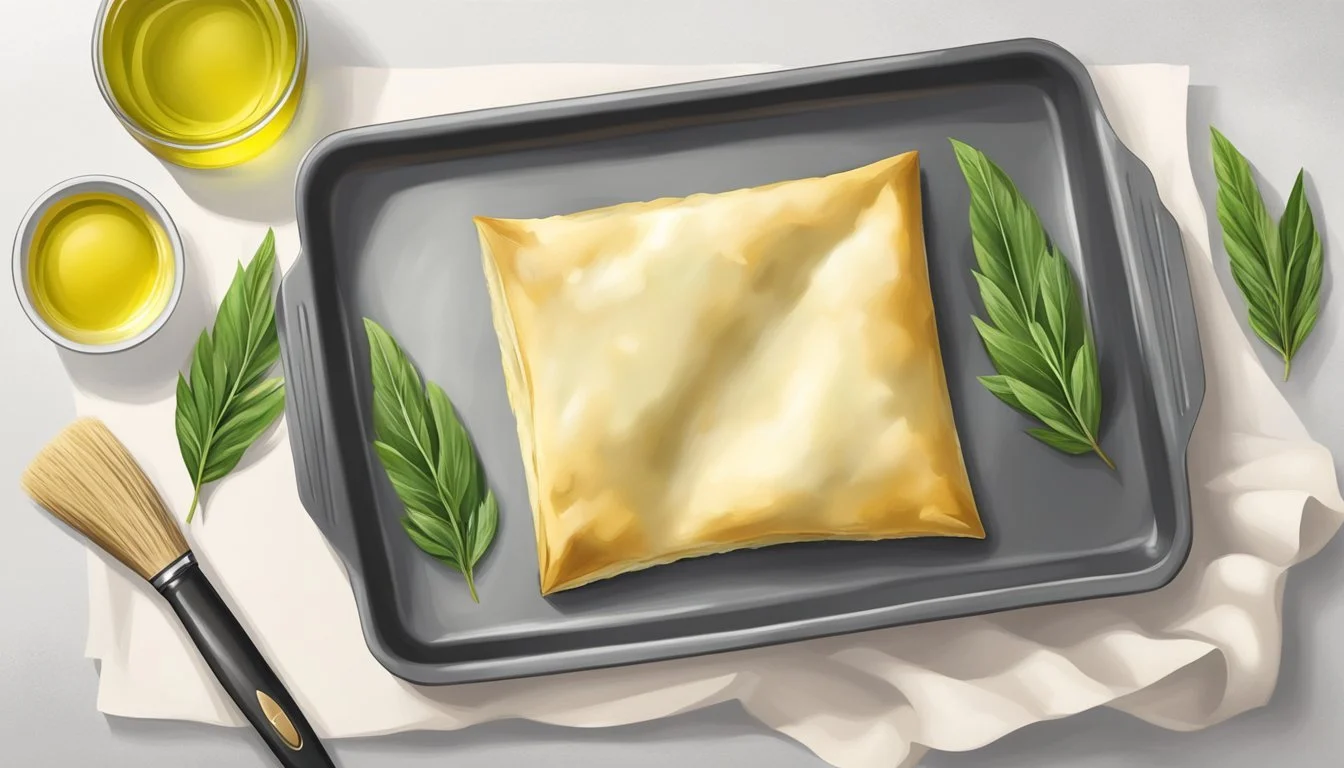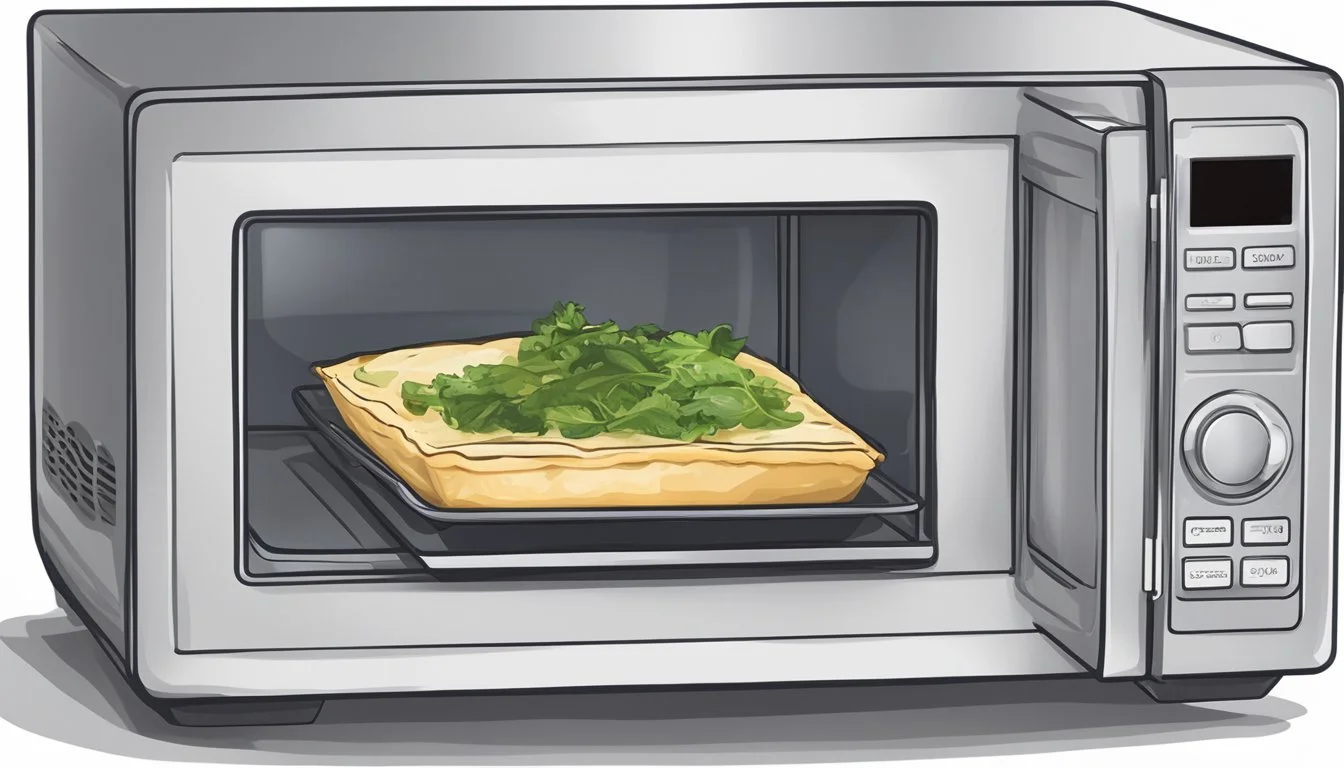How to Reheat Gluten-Free Spanakopita to Maintain Its Flavor and Texture
Reheating gluten-free spanakopita can be a delicate process, especially if you want to maintain the crispiness of the phyllo dough while ensuring the filling is perfectly heated. Traditional spanakopita, a beloved Greek dish, transforms beautifully into a gluten-free version, but it requires some specific techniques to reheat without compromising its texture and flavor. The most effective method to reheat gluten-free spanakopita is by using an oven set to 180°C (350°F) for about 10-15 minutes, which helps preserve the crispy layers of phyllo dough.
For those pressed for time, the air fryer offers a quick and reliable alternative. Preheating the air fryer to 190°C (375°F) and reheating the spanakopita for approximately 5-7 minutes can yield equally satisfying results. This method ensures the exterior remains crispy without drying out the spinach and feta filling inside. Microwave reheating can be efficient but may not deliver the best texture, so it's worth considering only when necessary.
Maintaining the integrity of the gluten-free phyllo dough is paramount when reheating this Greek delicacy. By following the right methods, you can enjoy spanakopita that tastes fresh out of the oven, every time. From Greek celebrations to simple weeknight dinners, knowing how to properly reheat gluten-free spanakopita ensures you savor every flaky, flavorful bite.
Understanding Gluten-Free Spanakopita
Spanakopita, a traditional Greek pastry filled with spinach and sometimes other ingredients, has been adapted to fit gluten-free diets. This section explores the traditional spanakopita and highlights the benefits of its gluten-free counterpart.
What Is Spanakopita?
Spanakopita is a savory Greek dish made from spinach, feta cheese, onions, and herbs, all encased in layers of filo pastry. The dish is known for its rich flavors and crispy, golden-brown exterior. Traditional spanakopita relies on wheat-based filo dough, which poses an issue for those with gluten sensitivities or celiac disease.
Adapting this dish to be gluten-free involves substituting the traditional filo dough with alternatives made from gluten-free flour blends. These blends often include rice flour, tapioca starch, and xanthan gum to mimic the texture and flexibility of regular dough. The challenge is to maintain the delicate and crispy properties that make spanakopita so special.
Benefits of a Gluten-Free Diet
Eating gluten-free is essential for individuals with celiac disease or gluten intolerance. Adopting a gluten-free diet can help alleviate gastrointestinal issues, fatigue, and other symptoms associated with gluten ingestion. Gluten-free products, including spanakopita, use substitutes like gluten-free flour, ensuring that even those with dietary restrictions can enjoy traditional dishes without adverse effects.
Moreover, a gluten-free diet often encourages consumers to explore a wider variety of whole, unprocessed foods, leading to potentially healthier eating habits. Gluten-free spanakopita offers a way to enjoy a beloved dish while adhering to dietary needs, combining the benefits of a balanced diet with the enjoyment of rich, traditional Greek flavors.
Ingredients Overview
When preparing gluten-free spanakopita, the choice of pastry and key ingredients play crucial roles in achieving the desired texture and flavor. This section provides an in-depth look at selecting the right gluten-free pastry and essential ingredients needed for the recipe.
Choosing the Right Gluten-Free Pastry
The pastry is a critical component in spanakopita. Traditional phyllo dough is often used, but for a gluten-free version, substitutes such as gluten-free puff pastry are ideal. Brands like GeeFree and Schar offer options that maintain the flaky consistency without gluten.
When selecting a gluten-free pastry, ensure it is versatile and can handle the rolling and folding required. Some may prefer making their own using a blend of gluten-free flour and xanthan gum to achieve the right elasticity.
Key Ingredients and Substitutes
Feta Cheese: This cheese provides a salty, tangy flavor essential to spanakopita. For those avoiding dairy, look for dairy-free feta alternatives.
Spinach: Use fresh or pre-washed spinach, roughly chopped. Spinach is the primary filling ingredient, contributing to the dish's nutritional value.
Eggs: These bind the ingredients together, ensuring the filling sets properly. For vegan options, flax eggs or chia seeds can be used as substitutes.
Olive Oil and Onion: Saute chopped onions in olive oil to add a savory depth. Garlic can also be included for an additional flavor boost.
Gluten-Free Flour: Important for any homemade dough variations. Use an all-purpose blend that includes xanthan gum or guar gum for structure.
Ensuring the right balance of these ingredients will result in a delicious and cohesive spanakopita, even when making gluten-free or vegan adaptations.
Preparation Before Reheating
Proper preparation starts with thawing any frozen gluten-free spanakopita and preheating your oven to the appropriate temperature. Ensuring these steps are done correctly will improve the overall reheating process and enhance the final result.
Thawing Frozen Spanakopita
When handling frozen gluten-free spanakopita, it is crucial to thaw it properly to maintain its texture and flavor. Remove the spanakopita from the freezer and let it thaw in the refrigerator for several hours or overnight.
Avoid room temperature thawing to prevent sogginess. If pressed for time, placing the spanakopita on the counter for a short period can speed up the process, but always ensure it remains cold.
Note: Once thawed, it is essential to check that there is no excess moisture. Use a paper towel to gently blot any areas that appear too wet before reheating. Excess moisture can affect the crispiness of the pastry.
Preheating the Oven
Preheating the oven to 350°F (180°C) is an essential step to ensure even reheating. Use this time to prepare a baking dish by either lightly greasing it or lining it with parchment paper to prevent sticking.
Once the oven reaches the desired temperature, place the thawed spanakopita on the baking dish in a single layer. Avoid overcrowding to ensure even heat distribution. Depending on the size and thickness of the spanakopita, the prep time may vary slightly, but generally, 10-15 minutes is adequate to achieve a crispy finish.
Important Tips:
Monitor the cooking process carefully to avoid over-baking.
Puff pastry requires specific temperature and time to crisp up perfectly, so adjusting based on observation is key.
Ensure the pastry is golden brown and crispy before serving.
Reheating Techniques
Reheating gluten-free spanakopita requires careful attention to maintain its crispy phyllo dough and flavorful filling. Different methods offer various advantages, from maintaining texture to providing quick results.
Oven Reheating for Optimal Texture
The oven is the best option for achieving a perfectly crispy texture. Preheat the oven to 350°F (175°C). Place the spanakopita on a baking tray lined with parchment paper. This helps prevent sticking and ensures even heat distribution.
Bake for about 15-20 minutes. Check if the dough is golden and crispy. If needed, extend the baking time by a few minutes. Cover edges with foil to prevent burning, but ensure the inside heats thoroughly. Avoid high temperatures as they may dry out the filling.
Microwave Reheating for Convenience
For a quick and convenient method, the microwave can be used. Place the spanakopita on a microwave-safe plate and cover with a damp paper towel. This will help retain moisture in the filling.
Heat on medium power for 1-2 minutes. Check if it is warmed through. Phyllo dough may become slightly soggy, so this method is not ideal for achieving a crispy texture. If necessary, reheat in short 30-second intervals to avoid overheating.
Toaster Oven Method
A toaster oven strikes a balance between quickness and maintaining texture. Preheat the toaster oven to 350°F (175°C). Place the spanakopita on a small baking sheet or directly on the toaster oven rack.
Bake for approximately 10-15 minutes. Ensure the phyllo dough is crispy and not burnt. If the edges start to brown too quickly, reduce the heat slightly or cover with a small piece of foil. The toaster oven provides a smaller, more controlled environment to reheat without drying out the filling.
Tips for Best Results
When reheating gluten-free spanakopita, focus on preserving the flaky texture of the phyllo dough and maintaining the rich flavor of the filling.
Avoiding Soggy Pastry
To ensure the pastry stays crispy, avoid microwaving for long durations. Instead, use an oven or air fryer. Oven Method: Preheat to 350°F (180°C). Place spanakopita on a baking sheet and bake for 10-15 minutes. Air Fryer Method: Preheat to 375°F (190°C) and reheat for 5-7 minutes.
Always use olive oil or butter to brush the surface before reheating. This helps in achieving a golden-brown crust without drying out the pastry. Also, avoid covering the spanakopita during reheating to prevent trapping steam, which can make the pastry soggy.
Maintaining Flavor and Quality
To retain the vibrant taste, pay attention to the freshness of the ingredients. Reheating should be done carefully to avoid overcooking the spinach, cheese, and eggs in the filling. Ensure the spanakopita is spread out in a single layer to heat evenly.
You can also enhance flavors by reheating on a stovetop with a dash of olive oil or butter. Heat a non-stick pan over medium heat, cook each side for 2-3 minutes to reheat thoroughly, without compromising the quality of the filling.
By following these techniques, you can enjoy a gluten-free spanakopita that tastes just as good the second time around.
Serving and Pairing Suggestions
Spanakopita is a versatile dish that can be served during lunch or dinner.
For an appealing meal, consider pairing it with a light, refreshing salad. A Greek salad with cucumbers, tomatoes, olives, and feta cheese works well.
Balsamic vinaigrette or a lemon-olive oil dressing can enhance the flavors.
For a heartier meal, serve the spanakopita with a side of roasted vegetables.
Savory dips such as tzatziki or hummus also complement the flaky pastry.
If you're entertaining, spanakopita can be part of a meze platter. Include items like stuffed grape leaves, marinated olives, and sliced meats.
To keep the meal gluten-free, ensure all sides and dressings adhere to the same dietary requirements.
Lastly, fresh herbs like dill or parsley, sprinkled on top, add a burst of flavor and color.
Storing Leftover Spanakopita
Properly storing leftover gluten-free spanakopita ensures it remains fresh and safe to eat. This involves using airtight containers and understanding the time frames for both refrigeration and freezing.
Refrigeration Best Practices
To keep spanakopita fresh in the refrigerator, place it in an airtight container or wrap it tightly in plastic wrap. This step prevents moisture loss and odor transfer.
Store the spanakopita for up to 3-4 days. It's crucial to label the container with the storage date to track freshness.
Use a baking sheet lined with parchment paper to separate layers. This method keeps the phyllo dough from becoming soggy during refrigeration.
Mid-way through storage, check the spanakopita for any signs of moisture or spoilage. Swiftly reheat it to maintain crispiness.
Freezer Storage for Longevity
Freezing spanakopita extends its shelf life significantly. First, allow it to cool completely after baking.
Wrap individual pieces in aluminum foil or plastic wrap tightly. Place these wrapped pieces in an airtight freezer bag or container for optimal preservation.
Label each package with the date. Frozen spanakopita can be safely stored for up to 2-3 months.
When ready to reheat, preheat the oven. Place the spanakopita directly on a baking sheet. Bake until heated through, while ensuring the phyllo remains crispy. Do not use the microwave, as it may make the pastry soggy.
Nutritional Information
Gluten-free spanakopita is a savory dish that offers a combination of flavors and nutrients. It's important to understand its nutritional profile, especially if you have dietary restrictions.
Calories:
A serving of gluten-free spanakopita typically contains around 250-300 calories. This can vary depending on the ingredients used, such as types of cheese and whether butter or olive oil is included.
Carbohydrates:
Spanakopita made with gluten-free phyllo dough usually has around 20-25 grams of carbohydrates per serving. These come mainly from the dough and the filling's vegetables.
Protein:
Each serving provides roughly 5-8 grams of protein. The primary protein sources are spinach and cheese. Using feta or adding extra cheese can increase the protein content.
Fat:
Fat content can range from 15-20 grams per serving. This includes healthy fats from olive oil and fats from cheese. Be mindful if you're watching your fat intake.
Fiber:
Typically, you'll find about 2-4 grams of fiber in a serving of gluten-free spanakopita. Spinach is the main contributor to the fiber intake.
Salt:
Spanakopita contains around 300-500 milligrams of salt per serving. Most of the salt comes from cheese and seasoned fillings. For those on a low-sodium diet, consider using reduced-salt cheese and watch additional seasoning.
Knowing the nutritional contents helps in making informed dietary choices. This dish offers a satisfactory balance of carbohydrates, proteins, fats, and essential fibers.










